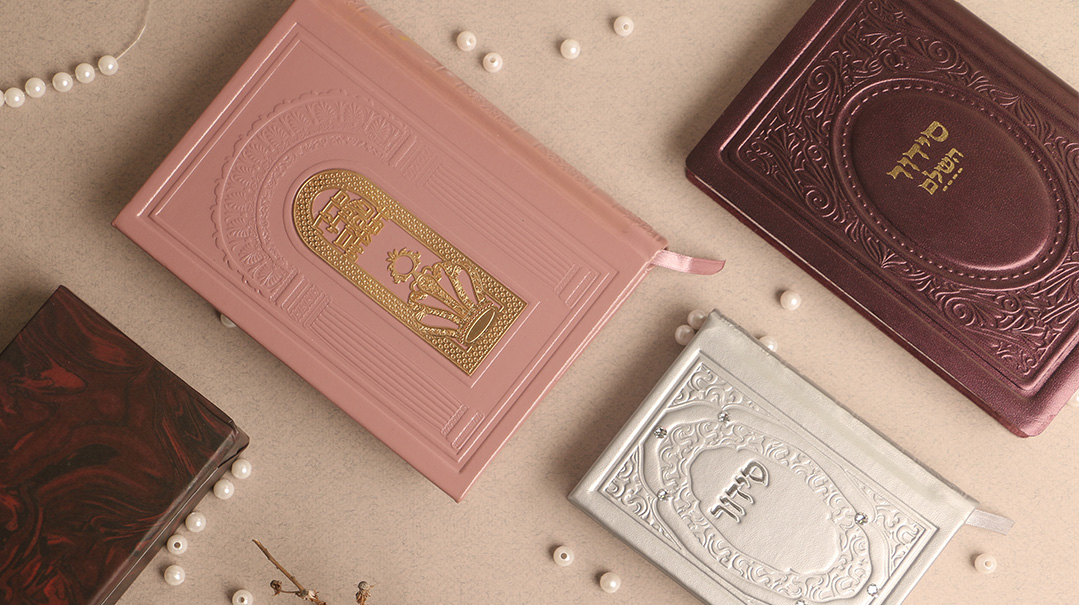“Are You Together?”
| December 6, 2022What is so different about us as a couple that elicits this reaction?

“Are you together?” This seemingly innocuous question never fails to aggravate my husband and to amuse me. We’ve been married for over 40 years, baruch Hashem, and still, every time we’re in a clothing store, going through security at an airport, or waiting in line at the bakery, we’re hit with the same question: “Are you together?” Even when the question is posed politely, sometimes I’ll detect a raised eyebrow of surprise at the answer.
What is so different about us as a couple that elicits this reaction? It’s simple: I’m taller than my husband. Not just “taller when I wear high heels” (which I never do); even in stocking feet, I am more than a few inches taller than he is. When we got married, I came up with a brilliant plan to address the discrepancy: when we grew old, I would be the one to shrink and he would stay the same, so we could eventually meet in the middle. But “man plans and G-d laughs”— while I haven’t lost even a centimeter of my five-foot-seven-inch height, my husband has started shrinking. (If it seems like a particularly fanciful plan, please bear in mind I was only 18 when I formulated it.)
The people who don’t know us can’t get their heads around the fact that we are a couple. We don’t “match.” Our being together puzzles them. It seems to challenge the natural order of things. “How could they have chosen one another?” is the unspoken sentiment. And I think this is what bothers my husband. But what seems strange to others is normative for us. When our boys were little and they would draw our family, the stick figure with the skirt was the tallest.
We only became observant soon after we were married, and sometimes speculated how our lives might have unfolded differently had we both been raised in religious homes: I would have gone to a Bais Yaakov rather than French private school, and my husband would have learned in yeshivah. I might have taught Chumash, rather than English. He might have given a lively daf yomi shiur (baruch Hashem, our son Shmuel does).
Perhaps with greater knowledge, we would not have made as many mistakes; certainly, we would not have felt that we were playing “catch-up” with our learning for decades. But we both know that had we been frum before we got married, no one ever would have put us together. This could only be the work of the Ultimate Shadchan.
When I first met my husband’s father, a Holocaust survivor, he asked me my Hebrew name. “Sarah Leah,” I told him. He looked surprised and delighted. I wondered what was so special about my name — it had always seemed so conventional to me.
“Sura Laya,” he said, inflecting my name with the Polish pronunciation. “That was my late mother’s name!” And his late father’s name had been Chanina, for whom my husband was named. He pointed out that his mother, Sura Laya, had been taller than her husband Chanina. (Yes, things started to feel very fated.)
When we married, we were conscious of how we were reviving the names of this couple from the shtetl. And as I learned more about the righteous woman who I began thinking of as my namesake, I imagined her cheering me on from the Next World at each stage of my spiritual growth. As she had died al kiddush Hashem, I hoped to try and live that way.
When we read the story in Lech Lecha of Avraham Avinu remarking on Sarah’s beauty, as if he had only just noticed, it always strikes me as a profound lesson in the nature of enduring love: When we love deeply, we learn to see beyond the physical to the soul within. Just as Avraham wasn’t misled into thinking that his wife’s beautiful appearance was her essence, many older couples increasingly perceive one another as spiritual presences.
I keep a picture of us from when we were dating in my office. In it we look younger than our grown children appear now. While the physical changes are undeniable, the myriad versions of our past and present selves meld in our perceptions of one another. It is like seeing one another’s neshamah through the multicolored prisms of a stained-glass window.
The increasing spiritual connection is also clear to me in the uncanny way that we’ve begun to read one another’s thoughts. I’ll be thinking of something quietly, and then out of the blue, my husband will give voice to my thoughts. What ensues is a wonderfully absurd argument about who is reading whose mind. (“You read my thoughts — that was MY idea!” “No, it wasn’t — I thought it first and YOU copied me!)
A couple of years ago we walked into a drugstore in Brooklyn together. The lady behind the counter greeted us with the usual, “Are you together?”
“Yes,” we answered, me smiling and my husband trying his best to remain polite. But the woman kept staring at us, and finally, her curiosity trumped her discretion.
“If you are together… what exactly is the nature of your relationship?” Choking back laughter, I replied, “We are one soul with two bodies. Ours is a ‘marriage of true minds.’ ”
“How nice,” she answered. “Which half needs help?”
(Originally featured in Family First, Issue 821)
Oops! We could not locate your form.







